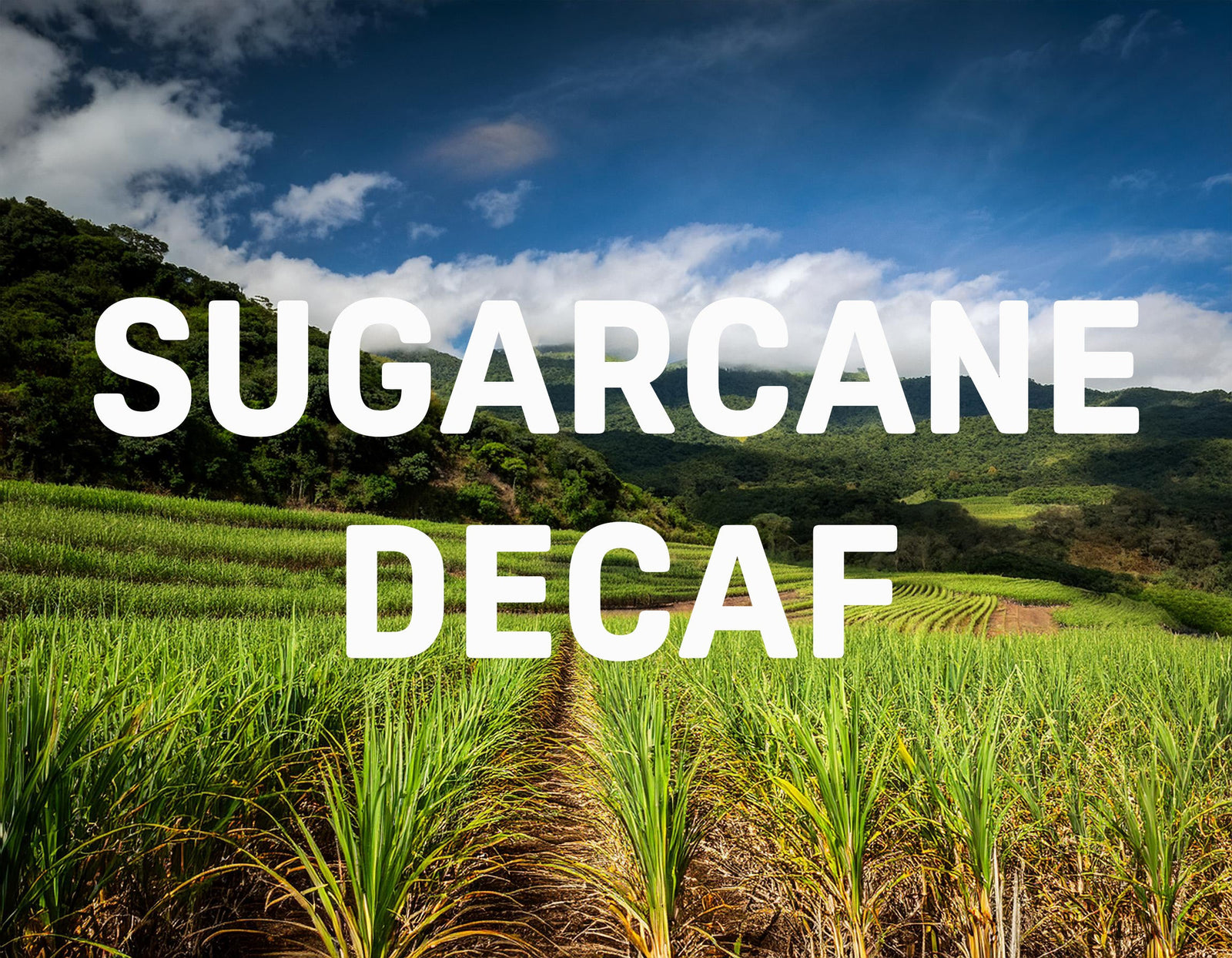What is the Sugarcane Decaffeination Process?

For many coffee lovers, “decaf” is often associated with images of flat, flavourless brews. But the sugarcane decaffeination process, also known as the ethyl acetate (E.A.) process, is changing that perception. This innovative method, popular in Colombia, allows for the removal of caffeine using natural ingredients while preserving the delicious flavours of the coffee beans.
The sugarcane decaffeination process is a natural method that uses ethyl acetate (E.A.), a compound derived from sugarcane, to extract caffeine from green coffee beans. Unlike some other decaffeination methods, this process avoids harsh chemicals, prioritizing a natural and sustainable approach.
Here’s a step-by-step breakdown of the process:
1. Harvesting and Preparation
Before the decaffeination begins, raw (green) coffee beans are collected. Since the caffeine must be removed before roasting, the process happens at the green coffee stage. High-quality beans are selected, as the quality of the beans is directly tied to the flavour of the final decaf product.
2. Steaming and Moisturizing
The green coffee beans are exposed to water and steam to increase their moisture content. This step swells the beans and opens their pores, making it easier to extract caffeine. The goal is to make the beans more permeable so the ethyl acetate can do its work.
3. The E.A. Bath
The beans are then submerged in an ethyl acetate solution. Ethyl acetate is a naturally occurring compound found in fruits, vegetables, wine, beer, and other foods. In the sugarcane decaffeination process, it’s derived from sugarcane molasses through fermentation. When the beans are bathed in this E.A. solution, the caffeine is gently dissolved and extracted.
4. Removal and Cleaning
After the caffeine has been extracted, the E.A. solution (now containing the caffeine) is drained. Interestingly, the extracted caffeine isn’t wasted — it’s often sold to other industries for use in energy drinks, pharmaceuticals, and cosmetics.
5. Final Steam and Drying
To ensure no ethyl acetate remains in the beans, the coffee is steamed at a higher temperature than the boiling point of E.A., which causes any leftover traces of the compound to evaporate completely. This step guarantees the beans are safe for consumption. The coffee beans are then dried back to their original moisture level, making them ready for roasting.
Does Ethyl Acetate Stay in the Beans?
One of the most common questions is whether any ethyl acetate remains in the coffee after the process. The answer is no. After the final steam and drying step, any residual E.A. is fully removed. Even if trace amounts remained, roasting the beans at high temperatures would eliminate it. By the time the coffee reaches your cup, it is completely free from ethyl acetate.
Why Colombian Coffee?
Colombia is the perfect place for the sugarcane decaffeination process to thrive. With a huge sugarcane industry and a world-renowned coffee-growing region, Colombia has the raw materials and infrastructure needed to make this method efficient and economically viable. It also eliminates the need to ship beans to a foreign processing facility, which would increase the coffee’s carbon footprint. Instead, the beans are grown, decaffeinated, and roasted in the same country before being shipped to consumers worldwide.










Leave a comment